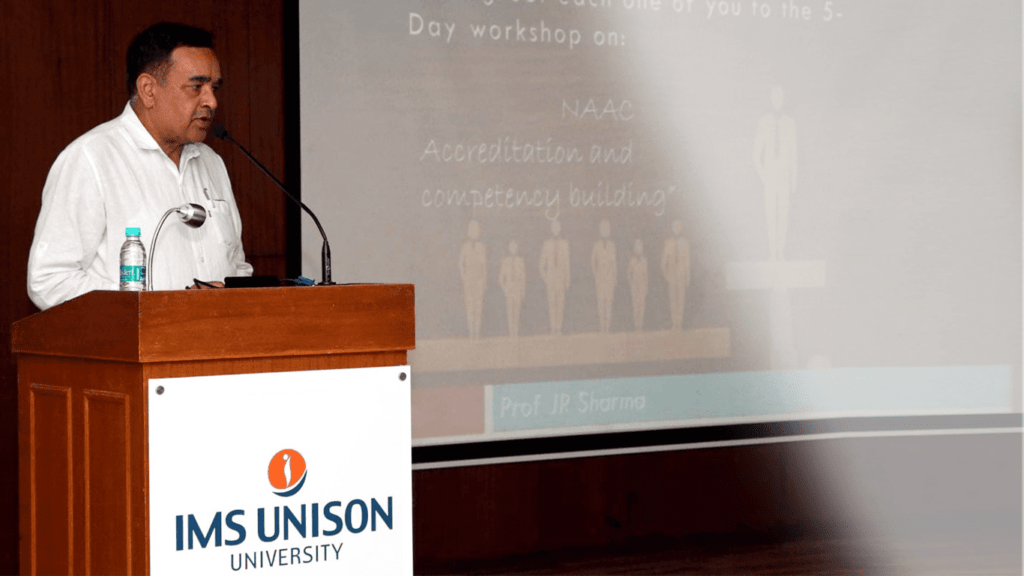The reason for a sudden interest and confidence in institutes of higher education in going for the NAAC accreditation is not difficult to explain. With the shifting of NAAC process substantially to quantitative metrics, devoid of an ‘on ground’ physical verification, it stands significantly diluted and comes quite within an easy reach of institutes. A well-intentioned reform to eradicate corruption from the system is all set to be doomed on its credibility, if corrective steps are not undertaken quickly. Contrary to this, NBA accreditation’s relatively tough pre-qualifiers are all physically verifiable by the Peer team, making it a far better robust process.
Forgivable NAAC The fact that the data uploaded by institutes on NAAC’s portal is not being physically verified by the DVV team, makes it sufficiently easy for some institutes to present, even an inaccurate/fudged data and get away with it. Quantitative metrics (QMs) in the Self Assessment Report (SAR) to be submitted online, form nearly 75% of the total weight of evaluation for the NAAC accreditation. These are later verified/validated by the DVV team with the data of institutes on AISHE portal, basic information or extended profile etc. submitted by the institute. Institute scoring minimum 30% in each criterion, is considered fit for the next round-the Peer team inspection. So, even if DVV team ends up finding all data of the metrics in sympathy with the one put up in the public domain, it could well be a fudged one, on all the platforms, a possibility which can’t be ruled out.
Who doesn’t know in the academic fraternity in India, that a very large number of affiliated private institutes while submitting application for annual approval on affidavit to the AICTE, misrepresent their data, every year? Why won’t such institutes do just the same in the NAAC accreditation, as well? The peer team visiting the institute subsequently, won’t have the mandate to verify the data that allowed the institute to score 30% and more during the initial fitness. They would be constrained by the charter of verifying only the qualitative metrics carrying 30% evaluation marks. It is a worrisome situation, and could easily lead to degradation of the credibility of the NAAC system.
Relatively tough NBA Accreditation
In the year 2017, NBA diluted its erstwhile tough pre-qualifiers and came up with a new set of qualifiers which do still have a desired degree of challenge. It has rendered over 50% of private affiliated institutes, unfit to apply for more than one or two programs, till such time they meet the qualifiers. As a result, institutes in the ineligible category can’t enhance their intake or add a program, go for MBA equivalence (PGDM institutes) by AIU etc. NBA is leaving no room for data manipulation and misrepresentation by institutes. The data is all verifiable by the visiting Peer team.
Here are the three most critical pre-qualifiers that pose challenge to the private institutes :
ENGINEERING
TIER 1
- Minimum 60% students’ admissions both in the institute and the program (average of the current and previous two years)
- Minimum 1:25 faculty to students ratio in the department, an average of the current and previous two academic years.
- Minimum 2 professors or one professor and one associate professor in the department and Number of PhDs in the department should be minimum 20% as average of the previous two academic year including current academic year. HOD must be a professor.
TIER 2
- Minimum 50% students’ admissions both in the institute and the program (average of the current and previous two years)
- Minimum 1:25 faculty to students ratio in the department, an average of the current and previous two academic years.
- Minimum one professor and one associate professor in the department and Number of PhDs should be minimum 10% in the department in previous two academic year including current academic year.
MANAGEMENT
- Minimum 60% students’ admissions in the program (average of the current and previous two years)
- Minimum 1:25 faculty to students ratio in the program/institute, an average of the current and previous two academic years.
- Minimum one professor and one associate profession for each program and minimum 20% of required faculty be PhDs in the department, in previous two academic year including current academic year.
Summing Up
The fact that NAAC has recently scrapped its two-window system (in a year) for the submission of application by institutes and reverted to a mode that allows IIQA submission, any time of the year, indicates the difficulty it faces to cope up with the increased number of institutes, and burden of online scrutiny, complicated by not so well-formed metrics, and different data of institutes at different platforms. This could still be handled, but the compelling need for verifying the information submitted, if ignored, could be seriously damaging to the NAAC credibility system. It is not a ranking system; it is accreditation, for sure!
-By Prof Sharma, Director and Principal Consultant ‘AccreditationEdge’ initiative. The views expressed are personal.












